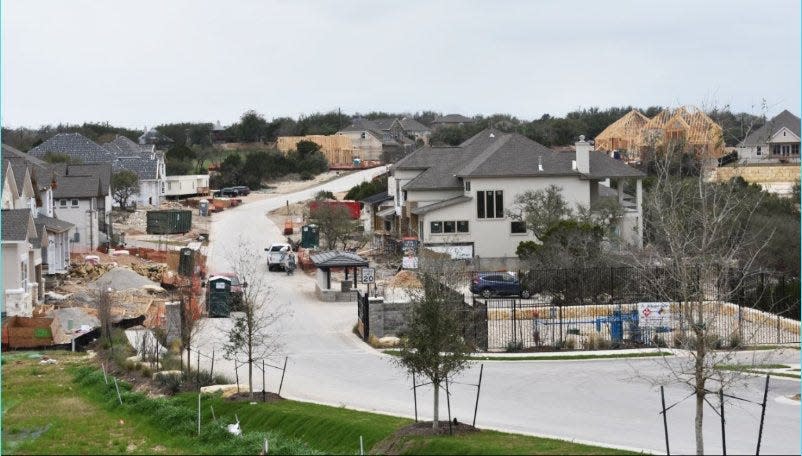Bee Cave City Council votes to bring workforce housing to town

The first workforce housing for essential workers will be coming to Bee Cave after the City Council on Feb. 27 unanimously approved a request for development proposals.
City Manager Clint Garza said the essential workers who would benefit from this housing are those facing “disparities” between current wages and the cost of living, including teachers and those in the health care field. While the Austin-area’s unemployment rate is only at 3% as of December 2023, Garza said it’s not financially feasible for many workers to live within city limits.
According to Zillow, the average house value in Bee Cave as of January was $900,699, almost three times larger than the national average of $342,941. Mayor Kara King said workforce housing has been in the works for eight years because of this issue, though no agreements were made before now.
“We have been researching workforce housing and visiting different beautiful developments over the last couple of years,” King said in a news release. “Our residents know how valuable the workforce is to this community and we are happy to take this next step in making sure the people who come to work in Bee Cave can also afford to live here.”
More: Bee Cave hires firm for new library build
The city is working with real estate company JLL to gather proposals concerning construction of the housing on roughly 22 acres of city-owned land in the southern area of Bee Cave Parkway, Garza said. He said the area would be a “multifamily development” created to serve multiple aspects of the workforce, including needed housing alternatives or community spaces.
“It’s really satisfying to see it start to take shape,” King said during the meeting. “We’re really doing something to alleviate stress for our businesses, our hospital workers, our first responders, our teachers.”
City officials said there is no known timeline about the possible construction or finalization of plans for the development of the workforce housing.
Analysis: Road expansion had little effect on traffic
Traffic levels remained relatively similar before and after the expansion of Vail Divide Drive through the Falconhead neighborhood, according to a traffic analysis brought before the Bee Cave City Council on Feb. 27.
Last spring, city officials said members of the community raised concerns to the council of non-residents taking advantage of the expansion by traveling through the neighborhood, causing backups and impeding on residents’ ability to move easily daily. Because of this, city engineer Kevin Sawtelle said the city hired Rodriguez Transportation Group to analyze traffic patterns on three routes to Lake Travis High School.
More: Clint Garza stepping down as Bee Cave city manager
The three routes studied were all via RM 620: one through the Falconhead neighborhood onto the Vail Divide extension, one from Bee Cave Parkway to Hamilton Pool Road, and the third from Texas 71 to Hamilton Pool Road. The study analyzed the routes during three different times of the year: May, before the school semester ended; June, before the expansion opened to the public; and November, once it was open.
The traffic analysis found that in the morning traffic peak, while traffic patterns remained unchanged, the route through the Falconhead neighborhood was the slowest by a few minutes. In the evening peak, travel times were consistently faster via Bee Cave Parkway. Travel times from before and after the Vail Divide opening were the same with only a few minutes of travel difference, Sawtelle said.
“(It) was a really big concern before Vail Divide opened that suddenly, Vail Divide and Spillman Ranch would dussdenly become a thoroughfare of the city,” King said during the meeting. “But the data is just not showing that that’s panned out.”
Photos: Special Olympics athletes converge in Bee Cave for Texas Winter Games
The traffic analysis also investigated whether it would be beneficial to the area to implement a right turn lane from Vail Divide Drive at Texas 71 to help traffic levels. However, Sawtelle said it would cost approximately $250,000 to build it because it would require the removal of intensive landscaping and the relocation of utilities.
“In my opinion, it’s not worth the cost and ruining the aesthetics right now at the Falconhead West entrance,” Council Member Andrea Willott said during the meeting.
The council did not vote on the construction of the turn lane and city officials said they plan to bring it up in the next meeting.
This article originally appeared on Austin American-Statesman: Workforce housing coming to Bee Cave

